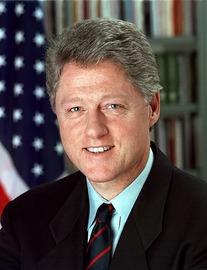“There is not a sexual relationship.” … “It depends on what the meaning of ‘is’ is.” President Bill Clinton
Ah, the meaning of words, particularly simple words. Words you thought that you were intimately familiar with, words that you thought you understood. Words that can damage your presidency or even wreck your patent.
Wait. A simple word can wreck your patent?
You betcha. Particularly if its meaning changes mid-stream.
The claims of a patent are composed of words, and words determine whether an infringer infringes – words, therefore, are important. Consider the simplest word there is – the word ‘a.’ In patent claims, the article ‘a’ is how we refer to a new element in a claim; namely one that has not been referred to before. For example, a claim might refer to ‘a microprocessor’ as the first reference to the microprocessor. The USPTO insists that we use the article ‘a’ or its companion ‘an’ to refer to the first use of a claim element and will reject claims that do not include ‘a’ or ‘an’ in the first instance of the element.
Patent lawyers, examiners and judges have known, like, FOREVER that the technical use of ‘a’ or ‘an’ means one of whatever the claim element is and also means two or more of that element; for example, “a bolt” means one bolt but also means to 2, 3, 4, or more bolts. These conventions, court decisions and USPTO practices are baked into every patent.
Until now.
The case that throws a wrench is Salazar v AT&T Mobility from the Federal Circuit. Salazar holds patents to a remote control. The claims recite ‘a microprocessor’ that performs functions of generating, creating, and retrieving control signals. AT&T Mobility had a similar remote control that performed the same functions, but performed those functions with multiple microprocessors rather than a single microprocessor. The trial court concluded that because the claims recited ‘a microprocessor’ that performed the functions, then only a device that contained a single microprocessor that performed all of the functions would infringe.
The Federal Circuit Court affirmed, agreeing that for infringement there must be at least one microprocessor that performed all of the functions. The Federal Circuit recited its own precedent, all involving claims to the functions of microprocessors, to conclude that a claim to ‘a’ microprocessor that performed functions means that a single microprocessor must perform ALL of the recited functions. The court quoted an analogy from its Varma decision:
[f]or a dog owner to have ‘a dog that rolls over and fetches sticks,’ it does not suffice that he have two dogs, each able to perform just one of the tasks.
The metaphor is pure sophistry. It is not possible to split a dog into two dogs, but trivial to split the functions of one microprocessor among two or more connected microprocessors. The Salazar case presents a hazard to any patent claim that includes functions that are performed by computers. Unless the claims or definitions in the patent specification indicate otherwise, after Salazar, an infringer can sidestep patent claims including computer-implemented functions simply by dividing the functions between two or more microprocessors.
This issue is easy for invention owners and patent draftsmen to avoid going forward – we need only to specify ‘one or more’ microprocessors to perform the functions. The Salazar decision unnecessarily places many, many existing inventions and businesses at risk.
— Robert Yarbrough, Esq.


